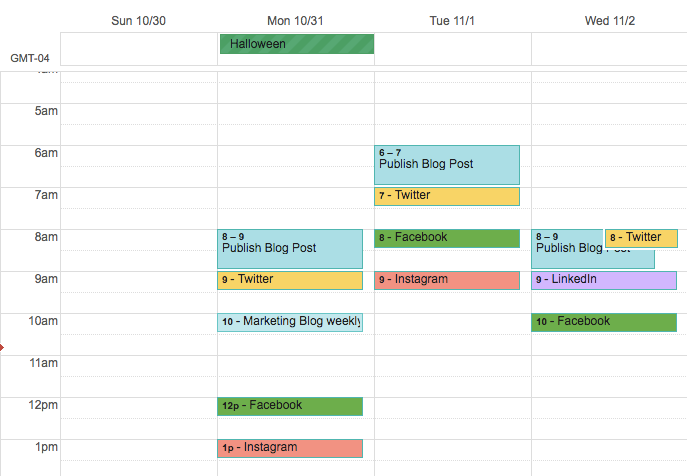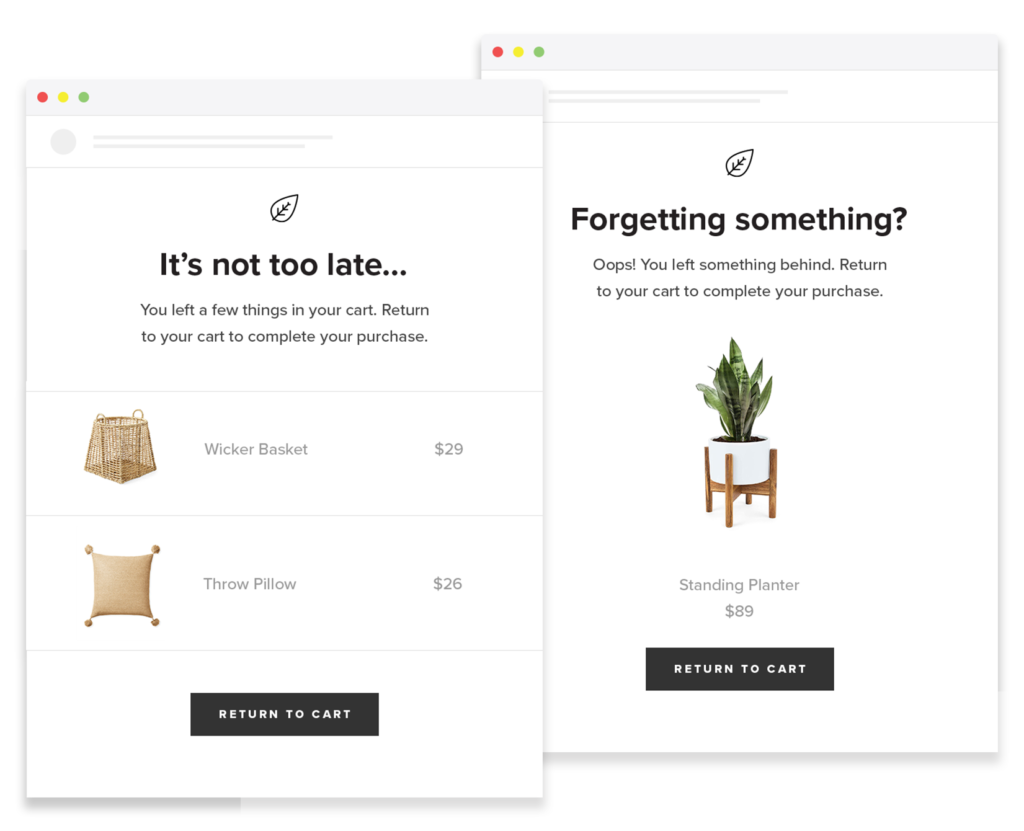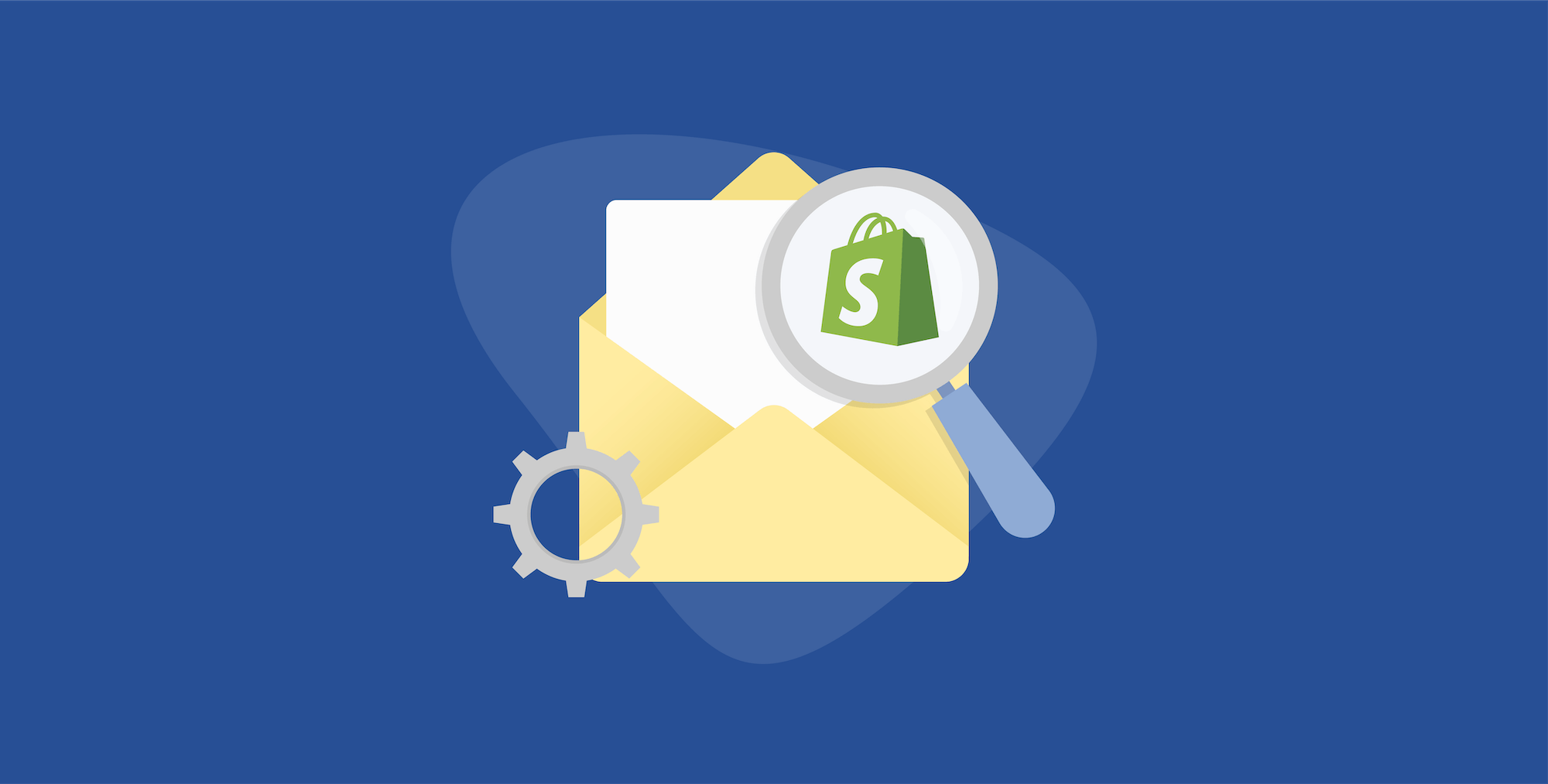Email marketing is one of the most powerful tools for e-commerce merchants to increase sales, build brand equity, and engage customers to turn them into advocates. Success doesn’t come without a strategy, however. For Shopify store owners, which make up a large population of online sellers, nailing your Shopify email marketing strategy will be a key to your success in 2020. Let’s dive into some elements that need to be part of your success checklist.
Have a content calendar planned out
Without a roadmap, it can be easy to get off track. A content calendar can act as your North Star to make sure you have content planned out, that it follows a theme or general direction, and that you’re prepared for big events when they come around.
A well-planned content calendar will feed your Shopify email marketing strategy by making sure you have campaigns planned out ahead of time. While it doesn’t take as much as many merchants might think to build a great email (more on that in a sec), being prepared with visual assets, promotional plans, segmented audience lists, and a follow-up plan can take an email campaign from barely noticed to highly successful.
Whether you use free tools like Trello and Excel/Google Sheets or a full-blown CRM like Hubspot, you can find a tool that supplements your workflows and assimilates into how you want to think through your content marketing plans.

Build beautiful (and mobile-friendly) emails
The stakes have been raised when it comes to the quality of emails your customers and prospects expect in their inbox. If your emails are lackluster, your response rates will reflect that. Focus on building dynamic emails with clear calls-to-action. Avoid clutter and any extraneous imagery that might distract your customer or feel off-brand.
If someone made a purchase from your Shopify store on your website, the emails they receive should match your website aesthetic. That way, it feels like a cohesive and recognizable experience for your customers, no matter where they interact with you.

That brings up another point—your customers won’t read your emails solely on their computers. Chances are higher they’ll be reading your email on their phone. Creating a mobile-friendly experience with tappable buttons and large, easy-to-read text will help ensure the success of your Shopify email marketing campaigns.
A summary of what you need for a successful email campaign:
- Segmented audience lists with personalization variables
- Mobile-friendly email design so your email looks great wherever they read
- Clear calls-to-action with tap-friendly buttons
- Your most important information at the top of the email
- Cohesive branding so your emails look recognizable to customers
- A planned reason to send every email campaign—don’t send emails just to check a marketing box
Abandoned cart emails save sales
Thus far, we’ve been talking about one-time send promotional emails, but there is another type that absolutely needs to be part of your Shopify email marketing strategy—automated emails. The reason automated emails work so well is they are based on customer behavior and preferences. They can include personalization variables that make them feel like they were written specifically for an individual customer. One of these automated emails is the abandoned cart email.

With 70-75 percent of customers abandoning an online shopping cart for a myriad of reasons, abandoned cart emails can save sales for e-commerce merchants. Statistics show that an email sent within a few hours of a customer abandoning a cart can increase sales, and over 50 percent of customers are likely to open an abandoned cart email. This is particularly true if the email contains a coupon or a free shipping offer (if you don’t already offer free shipping).
Learn more about abandoned cart emails and see some examples in this article.
ShippingEasy’s platform offers abandoned cart emails to Shopify merchants as part of our Customer Marketing platform. The seamless functionality is easy to set up, customize, and start capturing revenue that would otherwise be lost.
Take customers through the entire lifecycle
Every customer you interact with is at a different place in their relationship with your brand. Some are brand new, some could be called longtime VIPs, whereas others may be on their way to your competitor. How you talk to each customer and what kind of emails you send them both depend on where they are in the customer lifecycle.
As mentioned above, emails should feel like they were sent to that individual customer. If you know who they are and where they are in the customer lifecycle, you can increase sales and traffic to your Shopify store with targeted offers. Let’s look at a couple of examples (for a more in-depth list, check out the article linked above).
Buy-it-again reminder emails
A major benefit of a platform like ShippingEasy is that you have customer data, order data, and shipping data all in the same place. That is powerful when it comes to personalizing your emails.
For example, you’re able to hit the table stakes personalization of using a person’s name. You know which products they ordered based on their order data. If you provide consumable or products that don’t have an infinite shelf life (supplements, candles, oils, and the like), you can use the delivery data to trigger a buy-it-again reminder email at around the time they’d be likely to run out of the product. It will feel like you’re reading their mind, anticipating their need, and you’re making simple for them to refill. Everyone wins!
Review request emails
Customer feedback is the crux of success in e-commerce. 91 percent of 18-34 year-olds trust online reviews as much as personal recommendations, according to BrightLocal. So, basically everyone. There is some good news, however: approximately 71 percent of consumers will leave a review for a business if asked, according to SearchEngineLand. This shows that businesses need to be actively managing their reputation.
Rather than waiting on a customer who has a poor experience to leave a review, you can be actively encouraging your happy customers to write about their experiences. It’s actually a good thing to have a broad mix of reviews, as it adds authenticity to your reputation and encourages trust among those who are reading the reviews.
If you’re looking for more resources to improve your Shopify email marketing or other marketing initiatives, check out our Marketing Resources Hub by clicking the button below.
Rob Zaleski
Latest posts by Rob Zaleski (see all)
- USPS 2023 Shipping Rate Changes - November 16, 2023
